ARFF Daily News
Published on:
Monday the 3rd of February, 2025
South Sudan: At least 19 killed in plane crash
BENTIU
At least 19 people, including foreigners, died in South Sudan on Wednesday when a small aircraft carrying oil workers from the Unity oilfields of Rubkona County in Unity State to Juba Airport crashed at 10:30 a.m., State Information Minister Gatwech Bipal told Radio Tamazuj.
“The plane crashed and killed 19 people, including two pilots and two Chinese nationals,” Bipal told Radio Tamazuj by phone from Bentiu.
According to the local official, the aircraft, with registration 5X-RHB and hired by the GPOC oil firm, carried a total of 21 people on board, including two pilots.
Minister Bipal explained that authorities confirmed that 17 of the deaths were South Sudanese and two were Chinese nationals.
Two of the survivors, a South Sudanese and an Indian man, are in critical condition and have been taken to a hospital for treatment, the state minister said.
“The plane was carrying oilfield employees who were going on leave after spending 28 days at their workplace. Details will follow later after we receive more information from the GPOC [Greater Pioneer Operating Company] and the aviation company,” he concluded.
Meanwhile, Eng. Saleh Akot, the Acting Director of Juba International Airport, confirmed to Radio Tamazuj that a small aircraft, chartered by the oil company GPOC, crashed shortly after takeoff from Unity State.
“The flight departed this morning from Unity State, and while returning to Juba, the aircraft crashed shortly after takeoff. There were 19 passengers and 2 crew members on board. We are still in the process of gathering more information,” Akot stated.
Akot further noted that the aviation authority has sent a team to the crash site to investigate the cause of the incident.
Several crashes have occurred in South Sudan in recent years. In August 2024, a cargo aircraft caught fire after landing at Pieri Payam in Uror County, Jonglei State. The two crew members on board suffered injuries and were treated at a local clinic.
Last March, a military cargo plane carrying supplies to Yida in the Ruweng Administrative Area crashed at the Yida airstrip. In February 2024, a passenger aircraft operated by Africano Company, which was transporting returnees from the conflict in Sudan, crash-landed at Malakal airport. No injuries were reported.
In April 2023, a cargo plane carrying passengers crash-landed at Juba International Airport, with all passengers emerging unharmed. That followed a 2021 incident in which a Let L-410 Turbolet, a South Sudan Supreme Airlines flight to the Yuai airstrip, crashed at Pieri again with no casualties.
The deadliest crash occurred in August 2020, when a cargo plane crashed into a farm in the Kemeru area shortly after taking off from Juba International Airport. Eight people died, while a single passenger survived with injuries.
South Sudan’s challenging road infrastructure has made air transport a vital lifeline for many, contributing to the high frequency of aviation incidents.
https://www.radiotamazuj.org/en/news/article/south-sudan-at-least-19-killed-in-plane-crash?fbclid=IwY2xjawINuP1leHRuA2FlbQIxMQABHcxHxg52kFllQcAvfO9mvAOpN20_Z1rb_y0-FUY-KL8hFCpfuzMsuhN9Hg_aem_4cJGrkhvBX3hXEO83p7Tkg

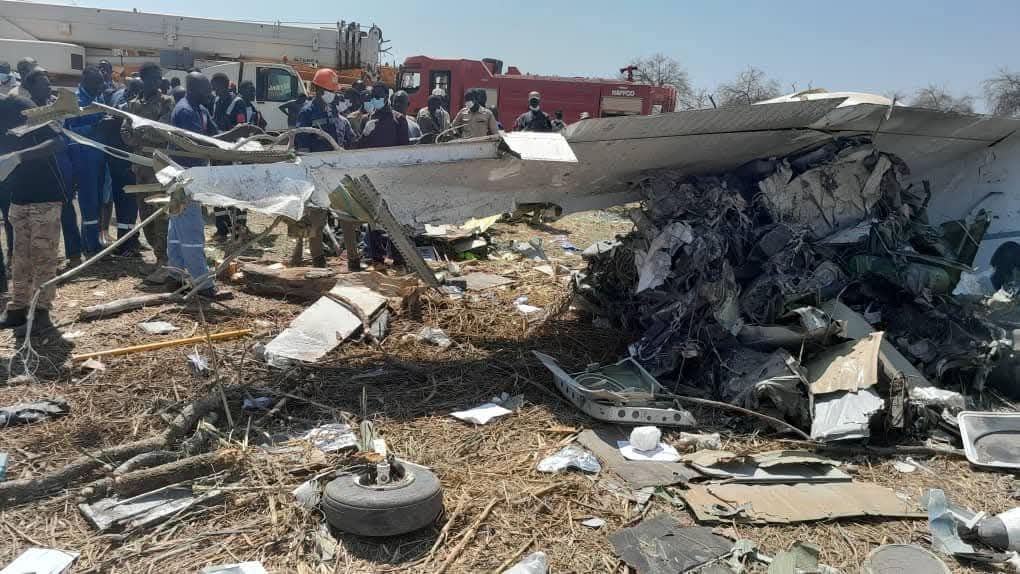
Mayor says 5 injured in fatal Philadelphia plane crash remain hospitalized, 3 in critical condition
By Associated Press
PHILADELPHIA — Three people injured on the ground when a jet crashed in a busy Philadelphia neighborhood, killing seven people, remain in critical condition, Mayor Cherelle Parker said Sunday.
Parker said 22 people were injured and five of them remain hospitalized. At least 11 homes were significantly damaged, along with some businesses.
"Our city continues to mourn their loss and they are in our thoughts and prayers," Parker said of the deceased.
A Mexico-bound air ambulance plunged to the ground Friday evening, less than a minute after takeoff from Northeast Philadelphia Airport with six people on board, including a girl who had spent months being treated at a city hospital.
One of the dead was killed inside a car as debris from the Learjet 55 crash exploded into the neighborhood, damaging nearby homes.
The investigation into the crash remained ongoing, Parker said, adding that officials were going door to door to seek information from neighborhood residents.
The National Transportation Safety Board said Sunday that investigators recovered the jet's cockpit voice recorder at the impact site at a depth of about eight feet. Also recovered was the aircraft's ground proximity warning system, which could also contain flight data, the agency said on social media.
The crash came just two days after the deadliest U.S. air disaster in a generation, when an American Airlines jet carrying 60 passengers and four crew members collided in midair in Washington with an Army helicopter carrying three soldiers. There were no survivors.
A busy thoroughfare near the Philadelphia crash site remained closed Sunday, but police said Roosevelt Boulevard would reopen by rush hour Monday morning.
The neighborhood known as Castor Gardens is a working-class area of dense row homes, said state Rep. Jared Solomon, who grew up there. It's a busy commercial and residential area crisscrossed by heavy traffic.
"These are just people who want to help others," Solomon said Sunday. "They're nurses, they're construction workers, they are first responders. In a community that is always poised to help others in and around our city; now we sort of are able to turn inward and all unite together."
The plane, bound for Tijuana with a scheduled stop in Missouri, had reached about 1,500 feet before it plummeted to the ground. National Transportation Safety Board chair Jennifer Homendy called it a "high-impact crash" that left the plane "highly fragmented." She said safety board staff would be working to collect debris from the wreckage, a process that could take weeks.
The child had recently completed treatment at Shriners Children's Philadelphia hospital for a condition not easily treated in Mexico, hospital officials said. Her mother and four crew members also died. Mexican President Claudia Sheinbaum said all six victims on the plane were from her country.
Philadelphia officials and plane owner Jet Rescue Air Ambulance have not disclosed the identities of the dead, but XE Médica Ambulancias, a Mexican emergency service, identified one of the victims as Dr. Raúl Meza of the State of Mexico near Mexico City, the air ambulance company's chief of neonatology. Relatives of Josué Juárez of Veracruz said he was the aircraft's copilot.
Parker said names of all of the deceased victims from Mexico will not be made public until Mexican consulate officials deem it appropriate.
But in Mexico, the Ensenada municipal government confirmed that two of the victims were from that coastal city in Baja California state and identified them as Valentina Guzmán Murillo and her mother, Lizeth Murillo Osuna.
Jet Rescue Air Ambulance, which operated the Mexico-registered airplane that crashed in Philadelphia, is based in Mexico and also has operations in Miami. In 2023 five crew members working for Jet Rescue were killed when their plane overran a runway in the central Mexican state of Morelos and crashed into a hillside.
Audio recorded by LiveATC captured an air traffic controller at Northeast Philadelphia Airport telling "Medevac Medservice 056" to turn right when departing. About 30 seconds later, the controller repeats the request before asking, "You on frequency?" Minutes later the controller says, "We have a lost aircraft. We're not exactly sure what happened, so we're trying to figure it out. For now the field is going to be closed."
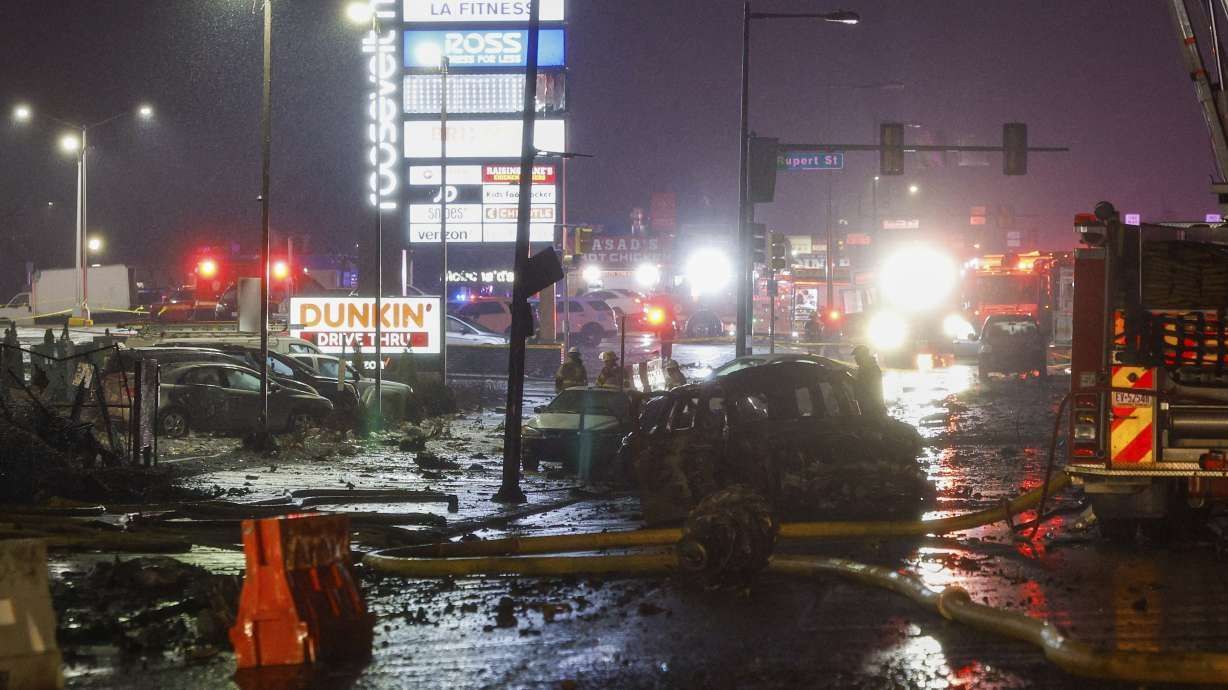

Delta jet makes emergency landing at MSP Airport
No one on Delta Flight 160 from Minneapolis to Amsterdam was injured
By Tim Harlow - The Minnesota Star Tribune
A Delta Air Lines flight bound for Amsterdam was forced to return to Minneapolis-St. Paul International Airport shortly after takeoff and make an emergency landing Sunday afternoon.
None of the 272 passengers onboard Delta flight 160 was hurt as the Airbus A330 safely landed without incident about 5:25 p.m. after pilots reported a mechanical failure of of the aircraft’s flaps, according to a statement from the airline.
“We apologize to our customers for this delay in their travels,” the airline’s statement said.
All passengers were rebooked on other flights to Amsterdam, the airline said.
The plane took off about 4:20 p.m. and circled the north metro for about an hour before returning to MSP, according to data posted on flight-tracking website flightware.com.
The incident occurred about a week after a helicopter collided with an American Airlines flight trying to land at Washington D.C.‘s Reagan National Airport, killing 67 people.
https://www.startribune.com/delta-flight-emergency-landing/601216111

Small plane crashes at Wahoo Airport
By 10/11 NOW
LINCOLN, Neb. (KOLN) - A small plane crashed in Saunders County Sunday afternoon.
Saunders County dispatch was notified of a potential crash by the Omaha Airport Authority just before 3 p.m.
The Saunders County Sheriff’s Office said an investigation showed the front lander gear collapsed after the plane landed, resulting in a “prop strike” on the runway.
Authorities said the pilot was the only person in the plane, and was not injured.
The FAA is conducting a follow-up investigation into the crash.
https://www.wowt.com/2025/02/03/small-plane-crashes-wahoo-airport/
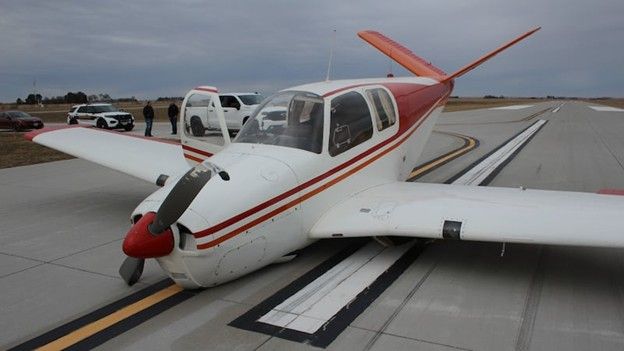
55 victims of midair crash found in Potomac River, wreckage removal to begin Monday
A diver helping with the recovery operation was hospitalized for hypothermia.
The bodies of 55 out of 67 victims killed when a plane and helicopter crashed near Reagan National Airport have been recovered from the Potomac River, officials said in a press conference Sunday.
First responders will not stop searching until all remaining victims are found, they said.
“We’re going to recover everyone,” said D.C. Fire and EMS Chief John Donnelly. “If we knew where they were, though, we would already have them out, so we have some work to do as the salvage operation goes on, and we will absolutely stay here and search until such point as we have everybody.”
Recovery crews have also been hard at work doing rehearsals to prepare for Monday morning, when they will lift the wreckage of the plane out of the Potomac River using a crane in the middle of the river.
Once the plane wreckage is removed, it will then be taken to a hangar for the National Transportation Safety Board investigation.
Officials also said that a D.C. police diver was hospitalized for hypothermia and is expected to be okay.
Those divers have been going into the water with cameras on their helmets. Debris spread out in the water is making the operation more difficult, and divers have to map out the locations of debris.
The victims include members of the figure skating community returning from a development camp in Kansas, soldiers, a group of friends returning from a hunting trip and a woman who was slated to start as a professor at the Howard University School of Law in the fall. Public schools in Fairfax and Loudoun counties said students were among the dead.
Grieving families gathered at DCA on the banks of the Potomac River Sunday to mourn their loved ones.
Mourners have created memorials near the crash site, at the Ashburn Ice House and a Virginia home where two girls and their parents lived.
Several D.C.-area community foundations have come together to launch a relief fund for families of the victims.
https://www.nbcwashington.com/news/local/55-bodies-recovered-wreckage-removal-in-potomac-river-to-begin-monday/3833787/
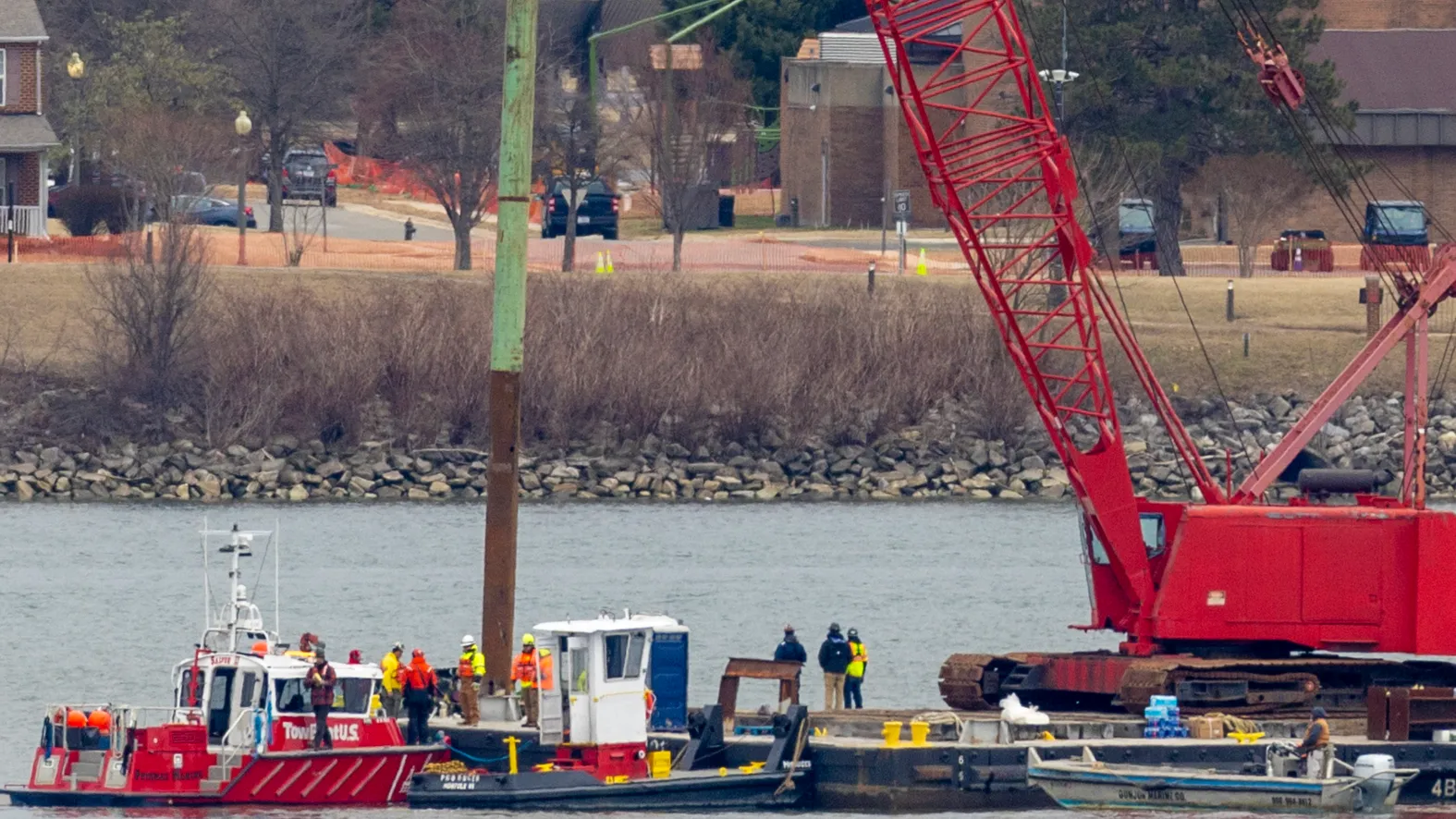
Cop, Bystanders Pull Survivors From Burning Cirrus
Two occupants of a Cirrus SR22 were pulled from the burning plane by a highway patrolman and two bystanders.
It will be properly recognized as a Cirrus Airframe Parachute System (CAPS) "save" but the occupants of an SR22 in California more accurately owe their lives to the heroics of a state highway patrol member and a couple of bystanders. The California Highway Patrol member, identified in a news release as Officer Ayala, had a motorist pulled over on Highway 101 in Santa Barbara last week when he saw the plane come down under the CAPS canopy. “Abandoning the stop, Officer Ayala raced to the scene, jumped a chain-link fence and found the injured pilot crawling from the burning aircraft,” CHP wrote. “As fire spread, he pulled the pilot to safety just moments before the plane exploded.”
The passenger had already been helped from the wreck by a couple of bystanders. Both of the occupants were taken to a local hospital with serious injuries. “Great job, Officer Ayala!” CHP said in its statement, adding that because of his “bravery and quick action, lives were saved that day.” It's not clear what prompted the pilot to pull the parachute.
https://www.avweb.com/aviation-news/cop-bystanders-pull-survivors-from-burning-cirrus/?MailingID=FLY250202012&utm_campaign=avwebflash&utm_medium=newsletter&oly_enc_id=3681J3205156A2X
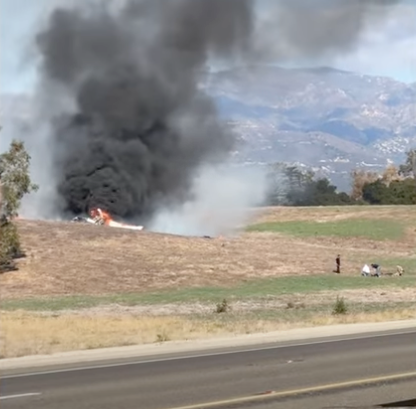
NTSB Final Report: Sheaffer Leroy B Kitfox Model IV
As He Lifted The Tailwheel Off The Ground, The Airplane Immediately Turned Left And Departed The Runway
Location: Palmyra, Pennsylvania Accident Number: ERA24LA316
Date & Time: July 19, 2024, 14:30 Local Registration: N788KF
Aircraft: Sheaffer Leroy B Kitfox Model IV Aircraft Damage: Substantial
Defining Event: Loss of control on ground Injuries: 1 Fatal, 1 Minor
Flight Conducted Under: Part 91: General aviation - Personal
Analysis: The pilot stated that, during takeoff from a 40-ft-wide runway and just as he lifted the tailwheel off the ground, the airplane immediately turned left and departed the runway. The airplane bounced hard and fractured the right main landing gear, coming to rest upright in a corn field. There was a right crosswind at the time of departure and the right wing lifted as soon as the tailwheel left the ground.
During a postaccident examination of the airplane, flight control continuity was established to all flight controls and no preimpact mechanical malfunctions were identified. The right main landing gear was fractured off and the brake line was severed. Both wheels spun freely and the brakes were not seized up.
Probable Cause and Findings: The National Transportation Safety Board determines the probable cause(s) of this accident to be -- The pilot’s failure to maintain directional control of the tailwheel airplane during takeoff from a narrow runway with a crosswind, which resulted in a runway excursion and collision with terrain.
FMI: www.ntsb.gov
NTSB Prelim: Cirrus Design Corp SF50
Pilot Efforts To Maintain Directional Control Were Not Successful
Location: Spearfish, SD Accident Number: CEN25LA069
Date & Time: January 3, 2025, 23:38 Local Registration: N603AP
Aircraft: Cirrus Design Corp SF50 Injuries: 6 None
Flight Conducted Under: Part 91: General aviation - Personal
On January 3, 2025, about 2338 mountain standard time, a Cirrus Design Corporation SF-50 airplane, N603AP, was substantially damaged when it was involved in an accident near Spearfish, South Dakota. The pilot and five passengers were not injured. The airplane was operated as a Title 14 Code of Federal Regulations Part 91 personal flight.
The pilot reported the flight proceeded uneventfully until landing. The air traffic controller advised him that the Black Hills Airport-Clyde Ice Field (SPF) runway was covered with 1/8” of wet snow. However, the runway braking action was reported as 5/5/5 (touchdown/midpoint/rollout) meaning that braking action was good and all portions of the runway wet including the presence snow. The airport was in sight about 4 miles out, and the pilot executed a straight-in approach to runway 13. He verified that the landing gear was down. His intention was to touchdown at the landing reference speed (Vref) to minimize the need for braking.
He disconnected the autopilot at 2 miles from the runway, and the airplane appeared to be lined up with the extended runway centerline.
The pilot recalled that during landing, about 8 to 10 feet above ground level (agl), he received an aerodynamic stall warning with the stick shaker. At first, the touchdown seemed normal, but then the airplane started drifting to the left. The pilot efforts to maintain directional control were not successful. The airplane “lurched hard” when it impacted the snowbank along the left side of the runway. When the airplane came to rest, he shut down the engine, and the airplane was evacuated.
One of the passengers reported that he was seated behind the right-side (co-pilot) seat and had a “good view” out of the windshield. He confirmed seeing the 3-green landing gear down lights while on approach. He noted that the airplane appeared to be aligned with but was slightly left of the runway centerline. As the airplane touched down, it quickly drifted to the left.
The left wing then caught the snowbank, and the airplane departed the left side of the runway. The airplane ultimately came to rest with the nose perpendicular to and facing the runway. The passenger recalled that when he exited the airplane, the wind was almost calm. A Federal Aviation Administration (FAA) inspector responded to the accident site the following day. He reported that the airplane had been moved to the ramp area of the airport. The right wing had substantial sustained damage which included deformation and delamination of the wing structure, partial separation of the right aileron, and damage to the fuel tank. The left main landing gear was extended, the right main landing gear was retracted in the wheel well, and the nose landing gear was collapsed. When the right landing gear was extended after recovery, the tire was still on the wheel rim and appeared intact, but the tire was flat.
The FAA inspector observed runway wheel marks (compressed snow) that corresponded to the accident airplane. The airplane appeared to have touched down about 150 feet before the 1,000-foot / touchdown zone markers. At touchdown, the left main wheel was 6 to 8 feet from the left side of the runway. The airplane departed the left side of the runway about 140 feet after it touched down. The snowbanks on each side of the runway were 2 to 3-feet high. The airplane struck two runway edge lights during the excursion.
Further examination of the airplane and download of available onboard data is pending.
FMI: www.ntsb.gov
NTSB Final Report: Berkut 540
When The Pilot Activated The Fuel Boost Pump, The Engine Lost All Power
Location: Cedar Rapids, Iowa Accident Number: CEN23LA273
Date & Time:July 1, 2023, 08:53 Local Registration: N567JS
Aircraft: Berkut 540 Aircraft Damage: Substantial
Defining Event: Loss of engine power (partial) Injuries: 1 None
Flight Conducted Under: Part 91: General aviation - Flight test
Analysis: According to the pilot, the accident occurred during his first flight of the experimental airplane. About 8 minutes after takeoff, upon reaching an altitude of about 3,250 ft mean sea level (msl), the airplane entered a gradual descent, and the pilot realized that the engine had lost partial power. He decided to return to the airport. He recalled the fuel pressure, fuel flow, and manifold pressure were within normal limits at that time. However, when the pilot activated the fuel boost pump, the engine lost all power. The airplane did not have sufficient altitude to reach the airport, and the pilot executed a forced landing to a road.
The airplane impacted a sign and trees adjacent to the road before coming to rest in a residential driveway. The pilot noted that when the airplane came to rest, he heard a “fast humming” sound and immediately switched off the ignition. Both wings separated from the fuselage, and both canards were damaged. Each of the four propeller blades were separated at the blade roots and fragmented.
A postaccident engine examination revealed several anomalies. The ignition harness leads corresponding to the Nos. 3 and 4 cylinder upper spark plugs were disconnected from the ignition module. In addition, the Nos. 1, 2, and 6 upper, and the No. 2 lower spark plug leads were loose and not fully connected at the ignition module. The ignition modules were tested and operated normally. The Nos. 1 and 2 cylinder spark plugs exhibited normal operating signatures; however, the remaining spark plugs exhibited sooty deposits. Engine data retained by the onboard avionics revealed the engine speed remained stable until about 6 minutes after takeoff when it decreased about 200 rpm consistent with a partial loss of engine power. At that time, the No. 1 cylinder head temperature (CHT) and exhaust gas temperature (EGT) decreased dramatically. The No. 2 CHT and EGT remained low for most of the flight.
About 14 minutes after takeoff, the engine speed decreased further from approximately 2,500 rpm to about 1,200 rpm with corresponding decreases in the other engine parameters. Approximately 15 seconds after the reduction in engine power, the fuel pressure increased consistent with the pilot activating the electric fuel boost pump. About one minute after the reduction in engine power, the pilot touched down on the road during the forced landing, and six seconds later the engine speed and fuel flow increased abruptly and momentarily and then abruptly dropped to zero.
The sudden increase in engine speed after impact suggested the engine had not lost power completely, and the engine speed increased when the propeller blades fractured during the accident sequence, which removed the resistive torque from the engine.
The partial loss of engine power was likely due to the ignition system anomalies observed during the postrecovery examination.
Probable Cause and Findings: The National Transportation Safety Board determines the probable cause(s) of this accident to be -- A partial loss of engine power during the test flight due to multiple ignition system anomalies.
FMI: www.ntsb.gov

Mailing Address
Subscribe to our newsletter
Contact Us
We will get back to you as soon as possible.
Please try again later.
